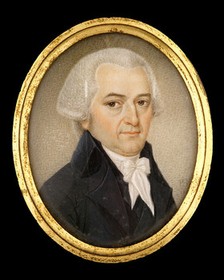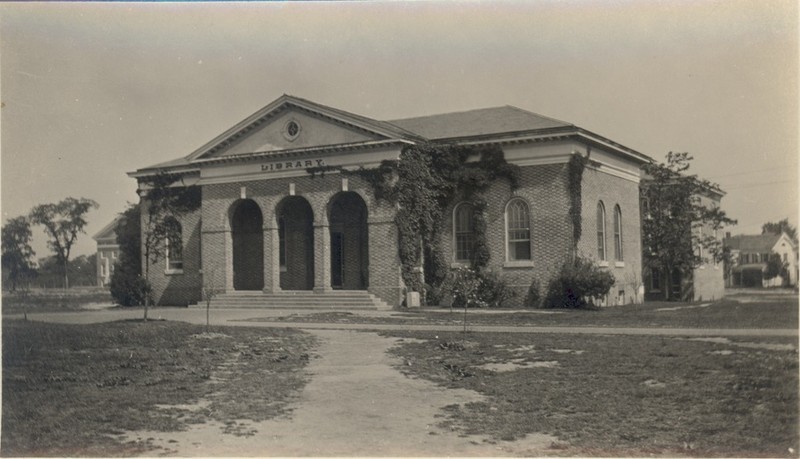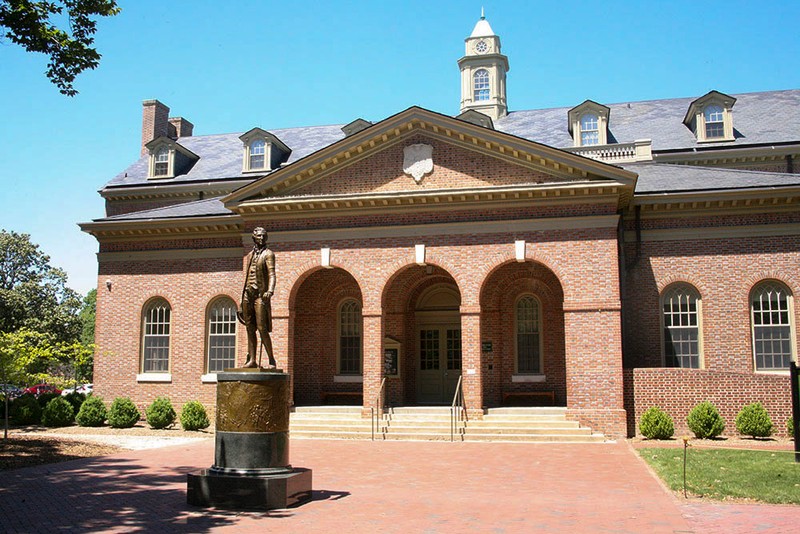Tucker Hall
Introduction
Author-Uploaded Audio
Listen to a narration of this entry's description by Victoria Endres.
Text-to-speech Audio
Images
St. George Tucker

The Library, 1925

Tucker Hall today

Backstory and Context
Author-Uploaded Audio
Listen to a narration of this entry's description by Victoria Endres.
Text-to-speech Audio
Originally designed to be the one of the central buildings for the College of William & Mary, Tucker Hall was once known simply as "The Library." The library’s construction was funded in part by Andrew Carnegie whose donation of $20,000 allowed the university to expand its book collection and construct a new building. While this building was completed in 1909, the college's first library opened in 1698. At that time, the college had been in operation for five years and the library began with a donation of two hundred books from Virginia Governor Francis Nicholson. The College of William & Mary remains the second-oldest university in the United States.
The first library was housed in the Wren Building which suffered from several fires. The fire in 1705 caused massive damage to the structure and destroyed all but one book from the collection, The History of the Council of Trent, which is now on display at The College of William & Mary’s Special Collections Research Center. The Wren building was rebuilt, and a new collection of library materials was developed.
Eventually the library outgrew the Wren building and the Library was created, opening in 1909 thanks largely to Carnegie’s donation. A later addition to the Library was funded in 1922 by the Carnegie Endowment Corporation. The added wing, completed a year later, would make the library’s footprint into an H-shape and double its size. The addition included a fireproof vault and new stack rooms while the older wing was mostly converted to office space. In 1930 another renovation saw the addition of large reading rooms, additional shelving, and a marble staircase. Just after the renovation was completed, the law school moved into the library’s 3rd floor.
Increased enrollment led to the need for a new library and in 1958 plans to build the Earl Gregg Swem Library were begun. When the new library building opened in 1966, the old Library was again renovated and reopened as the law school, eventually taking the name of Marshall-Wythe Hall in 1968. In 1980, the Law School relocated and the English Department moved into the building, renaming it Tucker Hall after St. George Tucker.
Tucker was a lawyer and judge in addition to working as a poet and essayist. Tucker published what was considered one of the major works on American laws in 1803 and became an influential figure in early legal issues in the United States. While serving as a judge for the Virginia General Court, Court of Appeals, and the U.S. District Court of Virginia, Tucker worked as a law professor at the College of William & Mary. As a professor, Tucker was an advocate for a more rigorous and formal study of law rather than the popular apprenticeship method of education that he had gotten himself. Tucker also formulated a plan for the gradual abolition of slavery. Tucker's plan was designed to appease and compensate slave owners, ending the legal enslavement of people of African descent in phases over a century. Tucker’s plan did not allow freed slaves basic rights, and while some wealthy Virginians made arrangements to emancipate some of their enslaved persons in their wills, Tucker did not free any of the people he kept in bondage.
Today the hall is still known as Tucker Hall and houses the university’s English Department. Several suicides on the premises have led to stories that the building is haunted by ghosts of former students. A local ghost tour group has made the location a stop on their tours which also visit other supposedly haunted sites in the colonial Williamsburg area.
Sources
Cain, Aine. The ghost in Tucker, Flat Hat News. November 1st 2013. Accessed May 8th 2020. http://flathatnews.com/2013/11/01/the-ghost-in-tucker/.
Douglas, Davison M. Tucker, St. George (1752-1827), Encyclopedia Virginia. February 7th 2020. Accessed May 8th 2020. https://www.encyclopediavirginia.org/tucker_st_george_1752_x2013_1827#start_entry.
Swem Library, Special Collections Research Center Wiki. September 9th 2019. Accessed May 8th 2020. https://scdbwiki.swem.wm.edu/wiki/index.php/Swem_Library.
Tucker Hall, Special Collections Research Center Wiki. September 9th 2019. Accessed May 8th 2020. https://scdbwiki.swem.wm.edu/wiki/index.php/Tucker_Hall.
https://www.encyclopediavirginia.org/tucker_st_george_1752_x2013_1827#start_entry
https://libraries.wm.edu/blog/post/walk-way-introducing-tribetrek-walking-tour-app
https://www.wm.edu/about/visiting/campusmap/location/tucker.php
